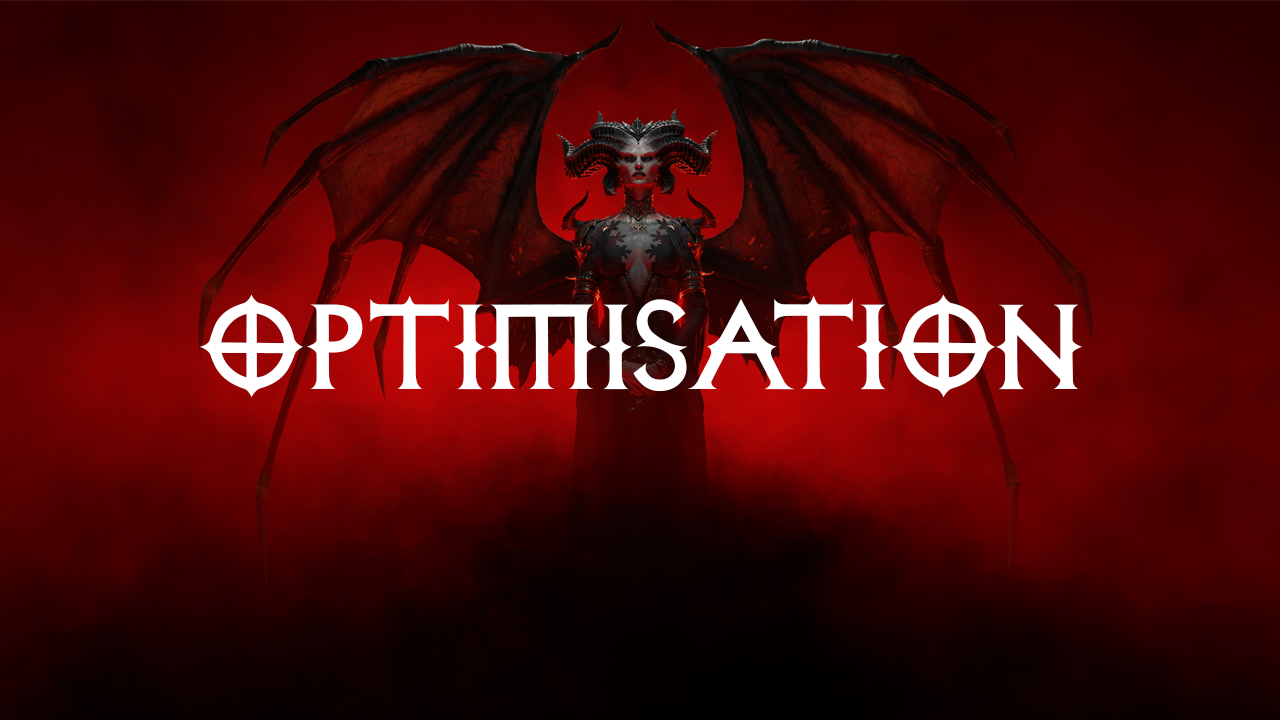If you are playing Diablo 4 but aren’t impressed with the performance your system is putting out, this guide will walk you through the steps to optimize your settings and increase the FPS (frames per second). Whether you have a high-end or low-end machine, old or new, the steps in this guide will help you optimise the game so that it runs as well as possible on your hardware.

Table of Contents
Related: How to fix Diablo 4 crashing | Solve Diablo IV crashing.
Diablo 4 captures the essence of the entire series that came before it. Even the less than admired Diablo 3. However, like any game, Diablo 4 may encounter crashing issues on Windows computers, interrupting your gaming sessions and may run poorly if configured incorrectly. So follow along as this guide shows you all the ways you can get Diablo 4 to run better on your system.
Update your GPU Drivers.
Update GPU Drivers Before we dive into in-game settings and optimizations, it's crucial to update your GPU drivers. Whether you have an Intel, AMD Radeon, or Nvidia GPU, make sure you have the latest drivers. Visit the manufacturer's website or use online resources to find and install the appropriate drivers for Diablo 4.
Close Unnecessary Background Applications
To ensure optimal performance, close any unnecessary background applications and system tray icons. This will free up system resources and prevent any unwanted interference while playing Diablo 4. Check your taskbar and task manager to identify and close non-essential applications.
Optimize Windows Settings
If you're using Windows 11, take advantage of the graphics settings panel. Enable "Hardware Accelerated GPU Scheduling" for improved performance. Additionally, turn on the "Optimizations for Windowed Games" feature, even if you plan to play in full-screen mode. This optimization benefits DirectX 12 games like Diablo.
Boot into the Game and Recommended Options
Launch Diablo 4 and load into a live instance. At the top left corner, you might notice an in-game FPS counter. This can be achieved using tools like River Tuner Statistics Server. While not necessary, it can help you monitor your FPS. Now, let's proceed to the in-game settings and optimizations.
Graphics Settings
Navigate to the Graphics panel in the game's menu. Start by setting the display mode to "Windowed Fullscreen." Then, select the best GPU available on your system. Choose your monitor and keep the resolution option as it is since you're using windowed fullscreen mode.
Disable Vertical Sync (V-Sync)
Turn off vertical sync in the graphics settings. This setting can introduce input lag and limit your FPS. Disabling it allows your system to render frames at a higher rate, resulting in smoother gameplay.
Quality Tab and Presets
Go to the Quality tab and choose a preset that suits your preferences and system capabilities. The recommended presets are shown on screen: low, medium, and high. Pause the video to copy the settings for your desired preset. Apply the changes and see how the game looks and performs.
Performance Tab Settings
Navigate to the Performance tab and adjust the settings according to your system's capabilities. If you have an Nvidia GPU that supports DLSS (Deep Learning Super Sampling), enable it for improved visuals and performance. Adjust the resolution percentage if you don't have DLSS, but avoid it if you have an Nvidia GPU. Experiment with these settings to find the right balance of visuals and performance.
Frame Generation (RTX 40 Series Only)
For users with an RTX 40 series graphics card or GPUs that support frame generation, enable this setting. Frame generation inserts AI-generated frames between each rendered frame, significantly boosting visual performance.
Resolution Percentage (Non-Nvidia GPU)
If you don't have DLSS, you can adjust the resolution percentage setting to further optimize performance. Start by reducing it to 90 and check the game's visual clarity. If needed, counteract any blurriness by increasing the sharpen image setting.
Fine-tuning and Finding the Optimal Settings To find the optimal settings for your system, it's essential to experiment and fine-tune various graphics options. Here are some recommendations:
- Texture Quality: Set it to a level that balances visual quality and performance. Higher settings provide more detailed textures but may impact performance on lower-end systems.
- Shadow Quality: Lower shadow quality can significantly improve performance. Experiment with different settings to find the balance between visual fidelity and performance.
- Anti-Aliasing: Enable anti-aliasing for smoother edges and a more polished look. However, higher anti-aliasing settings can impact performance, so adjust accordingly.
- Effects Quality: Adjust the effects quality based on your preference and system capabilities. Higher settings provide more detailed and visually impressive effects but may impact performance on lower-end systems.
- Post-Processing: This setting affects various visual enhancements such as bloom, depth of field, and motion blur. Experiment with different options to see which ones you prefer, keeping in mind that disabling unnecessary post-processing effects can boost performance.
Monitor Refresh Rate and Resolution
Ensure that your monitor is set to its native refresh rate and resolution. Higher refresh rates, such as 144Hz or 240Hz, can provide smoother gameplay if your system can handle it. However, keep in mind that higher refresh rates require more GPU power.
Overclocking and Hardware Upgrades
If you're comfortable with overclocking, you can squeeze out extra performance from your CPU and GPU. However, this process comes with risks, so be sure to research and follow proper overclocking guides. Alternatively, consider hardware upgrades if your system is struggling to meet your desired performance.
Third-Party Optimizations
Keep an eye on community forums, Reddit, and other gaming communities for third-party optimizations and tweaks specifically designed for Diablo 4. These can range from configuration files to custom launch options that may further enhance performance on specific hardware configurations.
